Step-By-Step User Guide
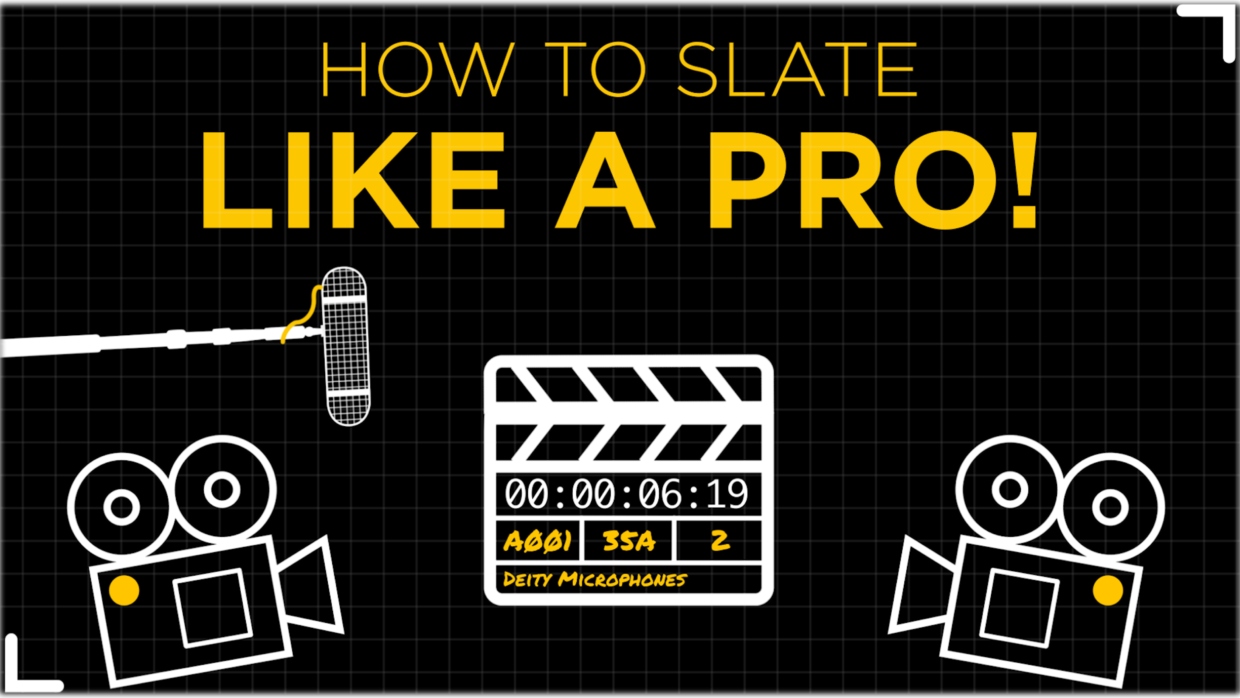
What is a film slate?
In its simplest form, a slate is how you sync cameras and audio recorders. When a slate “marks,” it is something that not only can be seen in your camera but can be heard in your audio waveforms.
Giving you a precise frame where the two can be synced, making the post process all the easier.
The sections of a slate
Depending on your region, these may differ. For this tutorial, we are using the American version* of the TC-SL1.
Roll, Scene, Take, Production, Director, Director Of Photography, and Date.
The information listed in these sections is going to be what helps your post team not only stay organized but will communicate what the team captured on the day, what still needs to be captured later, and if anything from the shoot day is missing.
*In Europe, their slates add another box called Slate Number, and it keeps a tally of the number of times you’ve pressed record for the run of the project. In China, they call this box the Shot Number.
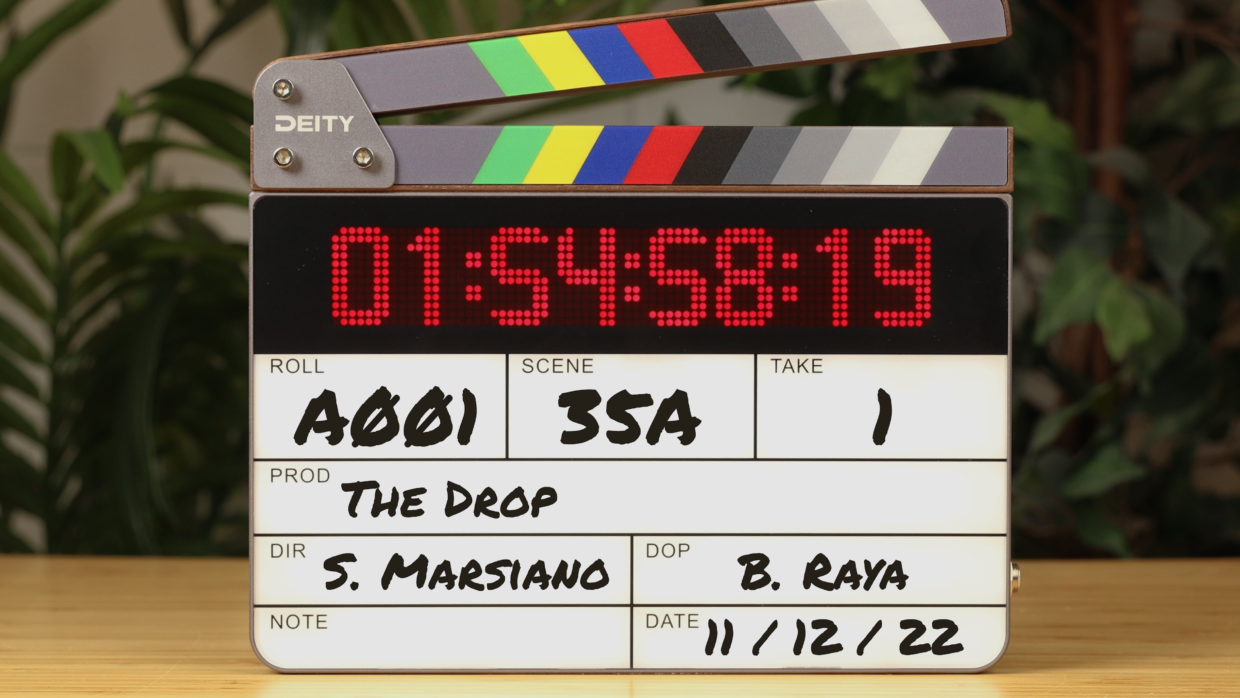
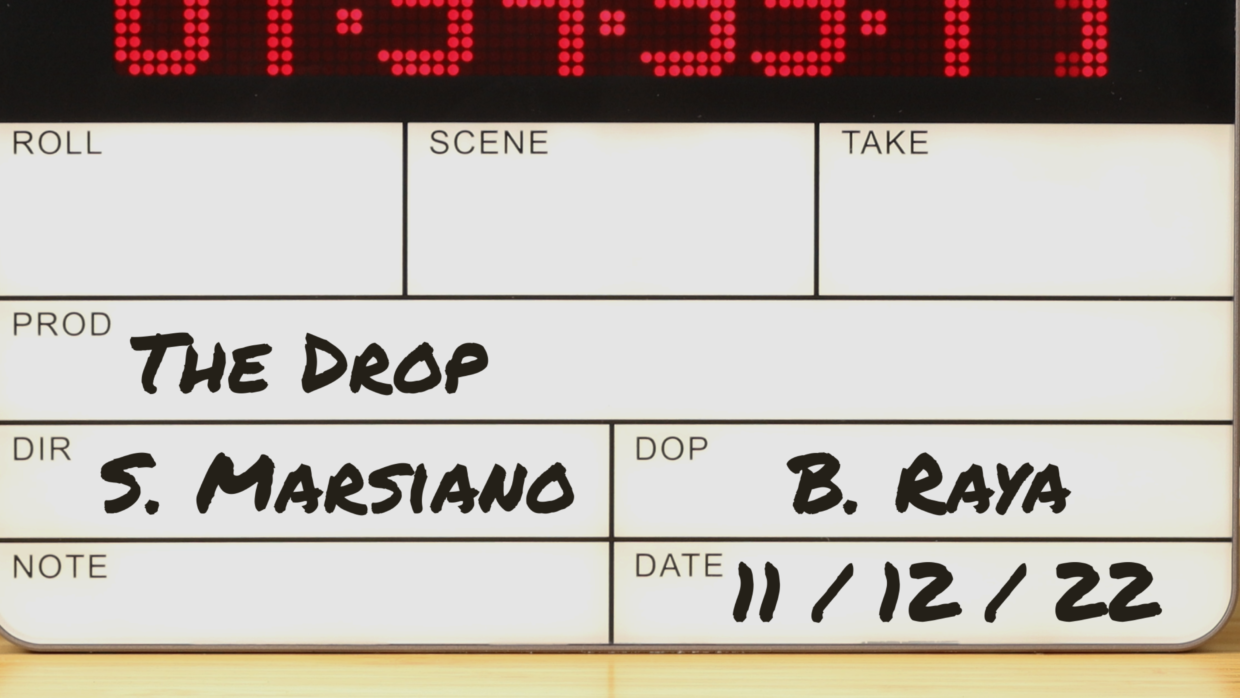
“Production, Director, Director of Photography, & Date”
It’s right there on the tin, the name of your production, the director, D.O.P., and the date the shoot is taking place.
“Roll”
This is the number of the memory card you are on. Always containing four characters, it will start with a letter and end with 3 numbers.
The letter is the camera; A is camera 1, B is camera 2, and so on. The number is the current media card in the camera. 001, 002, 003, etc.
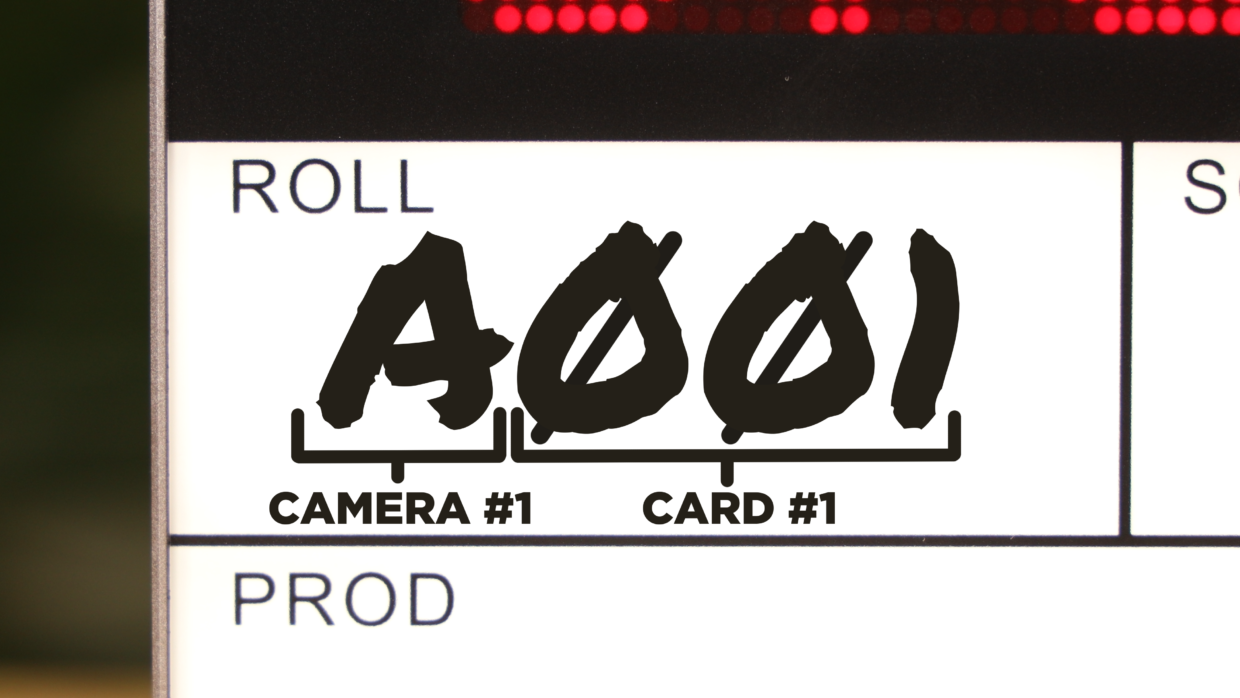
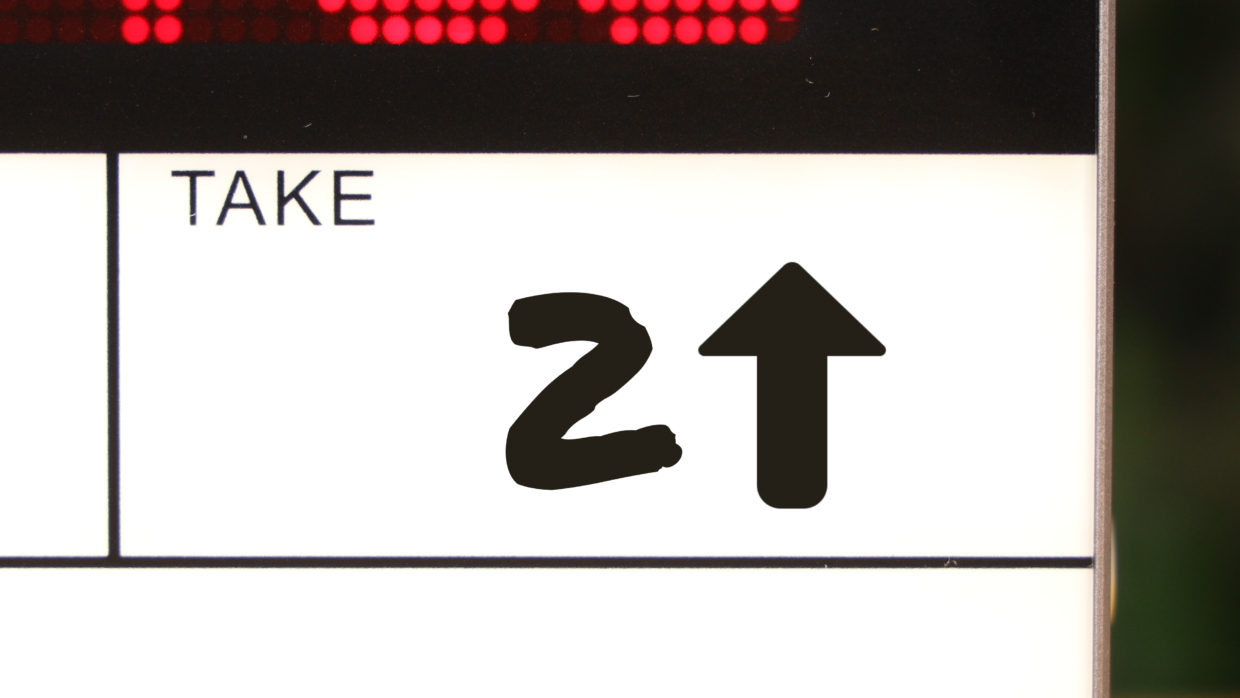
“Take”
This is the number of the take you are currently shooting, starting at “one” and going up every time the camera cuts. Only going back to “take one” when your setup changes.
In the event of a pickup shot, you will put a “PU” after the take number.
“Scene”
Though it just says scene, this section contains a heap of variable formatting and information. The primary is what scene number you’re currently shooting.
This number is then followed by a letter representing the different setups within that scene. If your lens or camera angle changes, so does the letter.

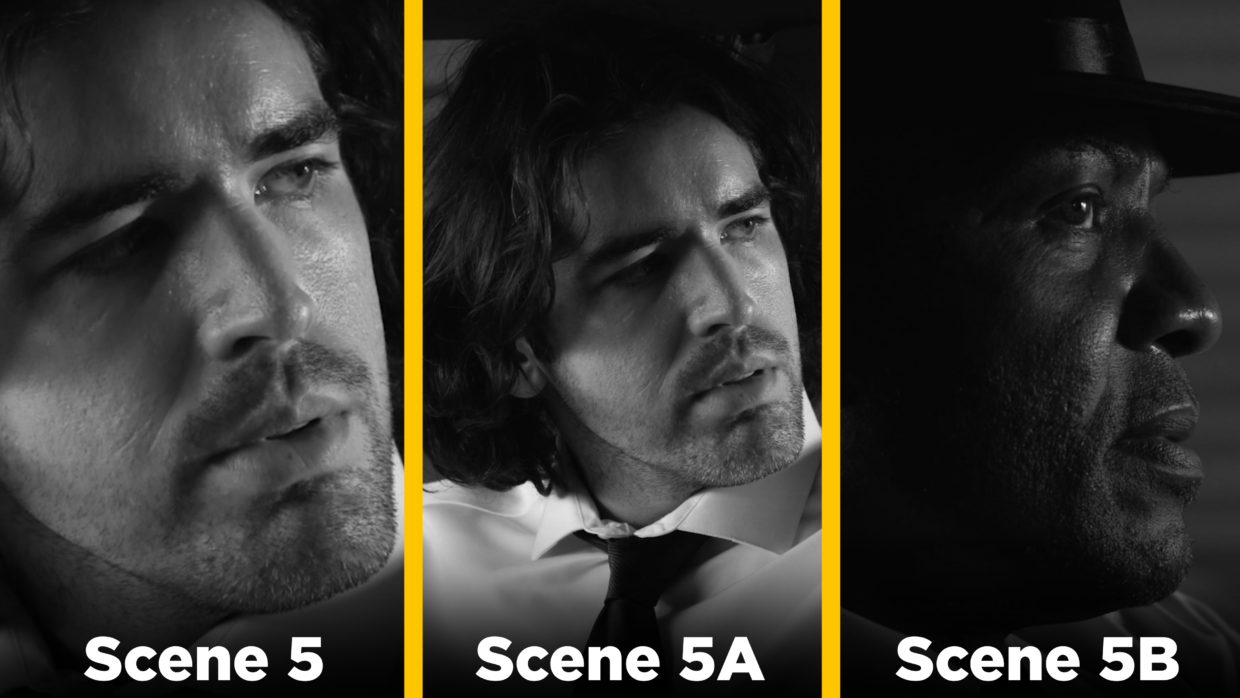
Scene setups
For example, we’re shooting scene 5 of a movie. Our first shot will be called “Scene 5, take one” After a lens change or the camera is moved, it becomes “Scene 5A, take one,” and after the camera moves again, it becomes “Scene 5B, take one.”
This letter keeps on going up till the scene is completely shot.
Avoid using “I” and “O” as these can often be mistaken for ones and zeros.
Special formatting
Additionally, there will sometimes be letters on the left side of the scene number to represent unique shooting situations.
Visual Effect Shots are marked with a “V.”
Reshoots are marked with an “R.”
Second-unit shots are marked with an “X” or “XX.”
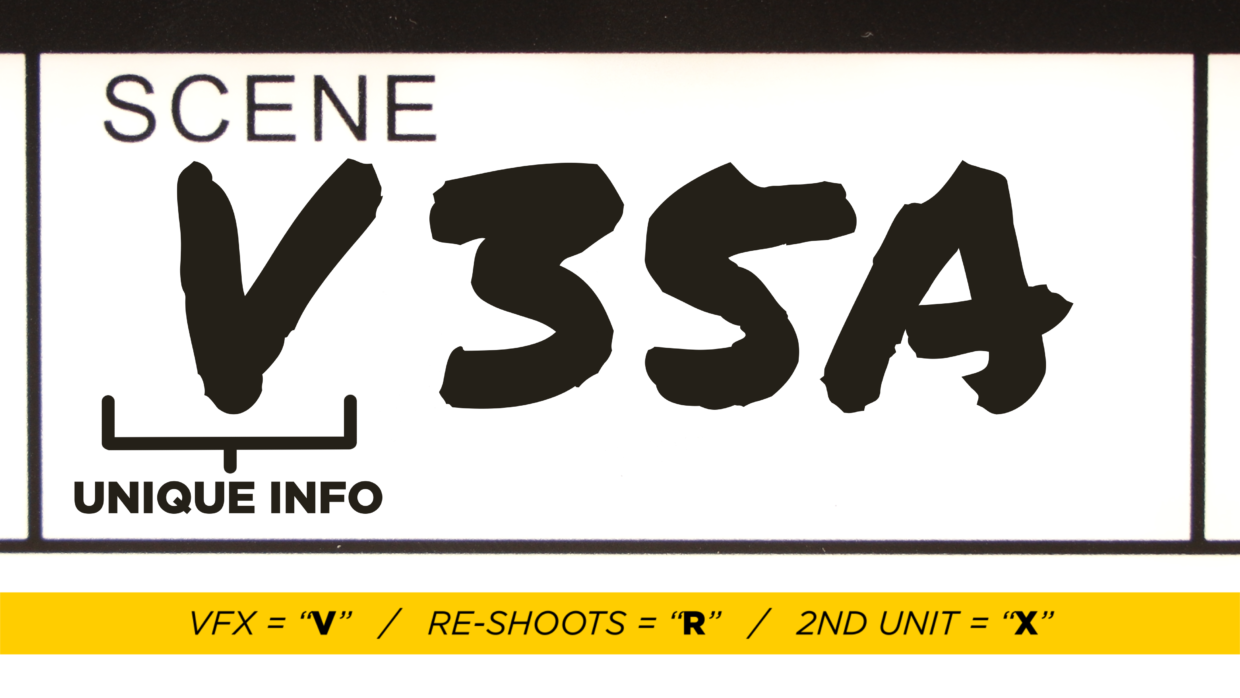
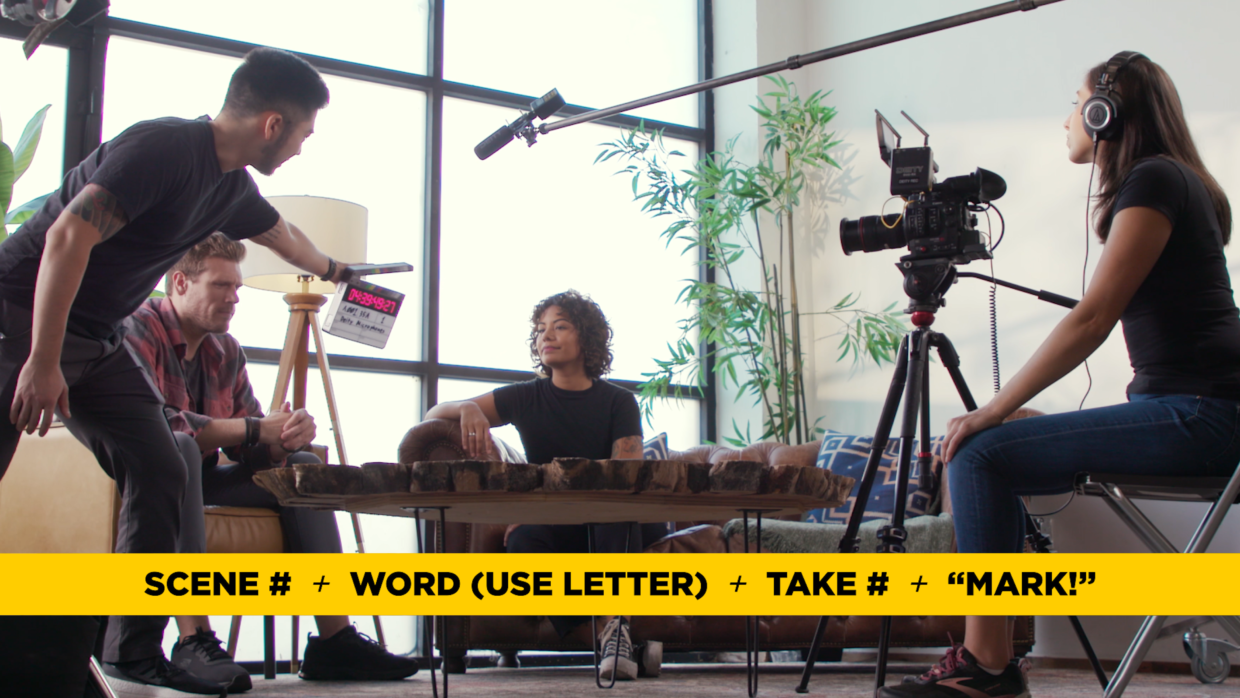
What to say when you mark
Now that you know how to label each section of the slate, here’s how you mark.
Make sure to have your slate in the frame before the camera starts recording. After the camera operator presses record and audio is speeding, the 2nd AC reads off key information from the slate before clapping the marker.
The scene number, followed by a word starting with the setup letter and finishing with the take number.
If the production is running multiple cameras, you will want to confirm each camera can see the slate; if not, you will need to slate multiple times, making sure each camera gets a clear visual of the slate, ending each call out with the camera letter. (Example: Scene 5B, Take 3, Camera A, Mark)
The phonetic alphabet
Some would argue that you must use the phonetic alphabet to represent the letter in your scene number.
As long as it’s comprehensible, you can use any word you like as long as it’s appropriate to the set you are on.
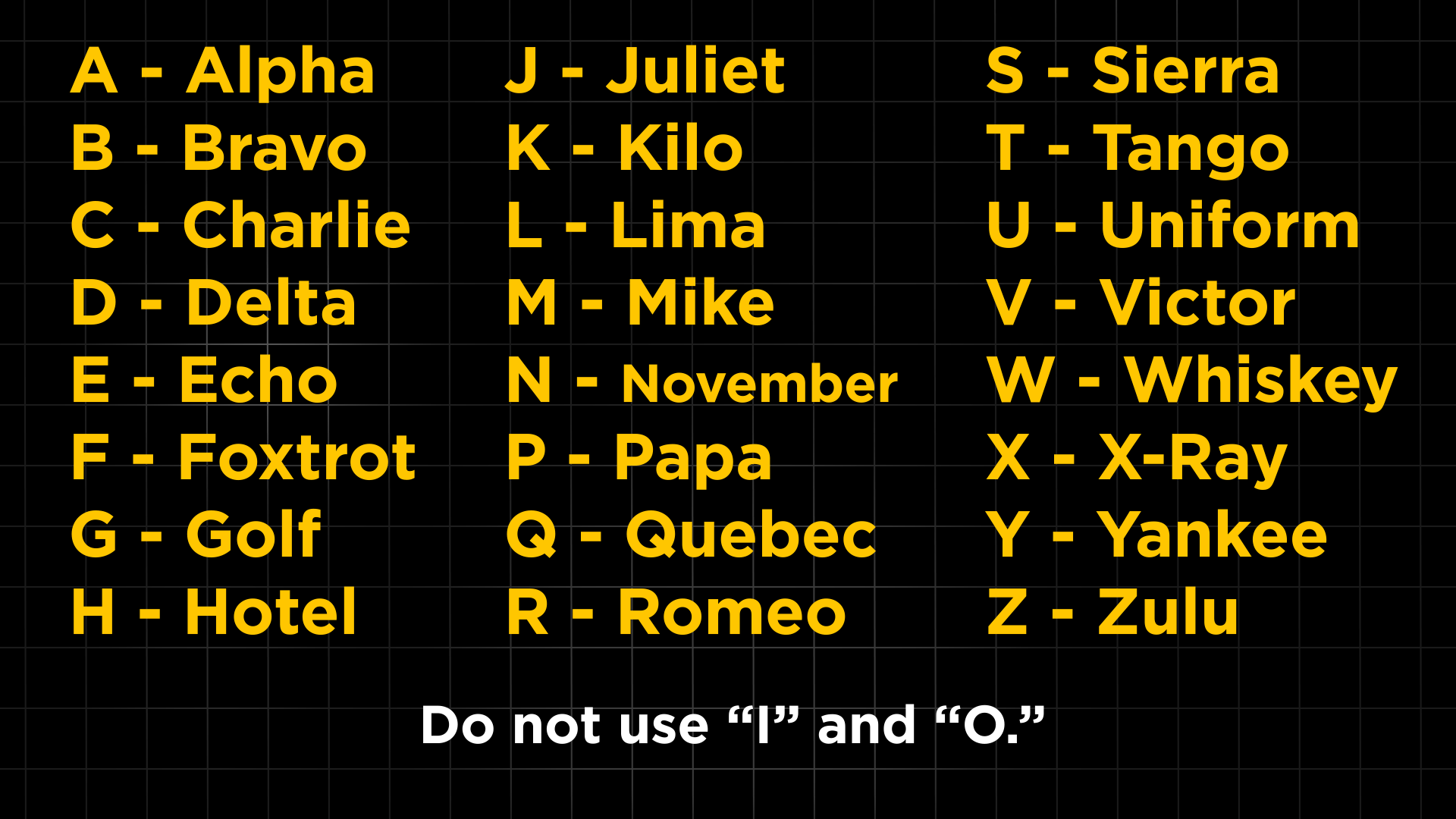
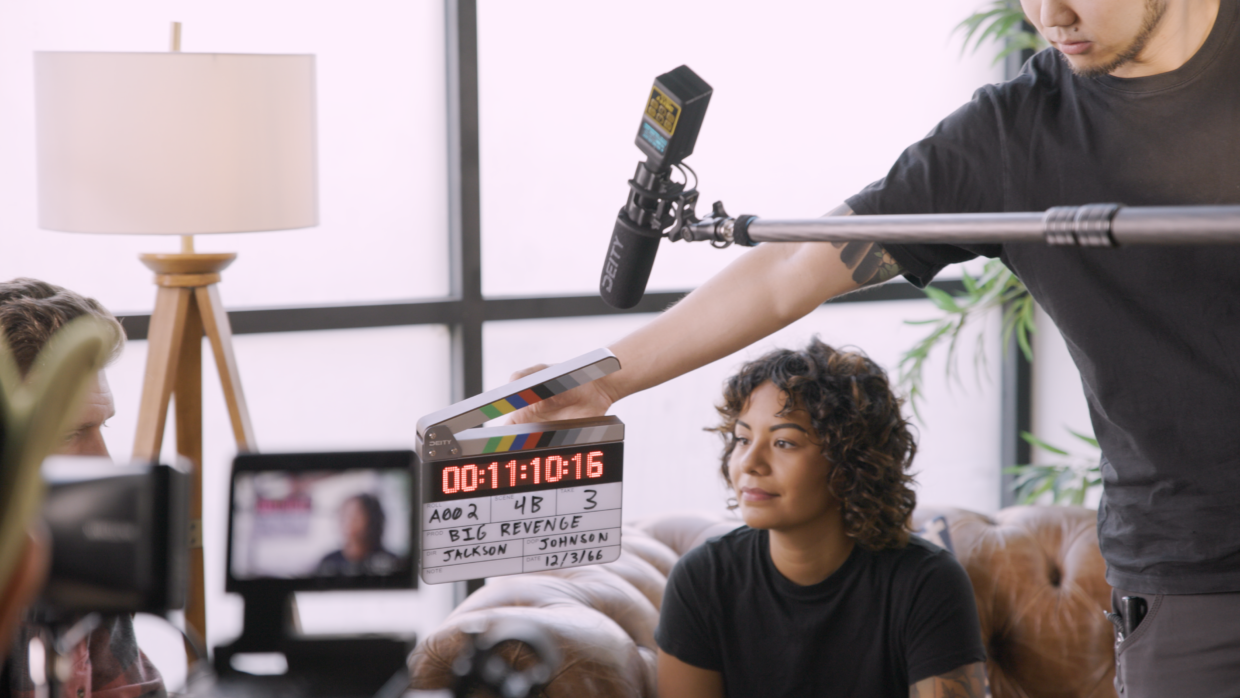
“Head Sticks”
Slating done at the front of the shot is called “head sticks.”
Start the shot with the slate in frame and upright, say the key information, then mark.
“Tail Sticks”
Some shots will require you to slate at the end of a shot. This is called “tail sticks.”
End the shot with the slate in frame and upside down, flip it upright, say the key information, then mark.
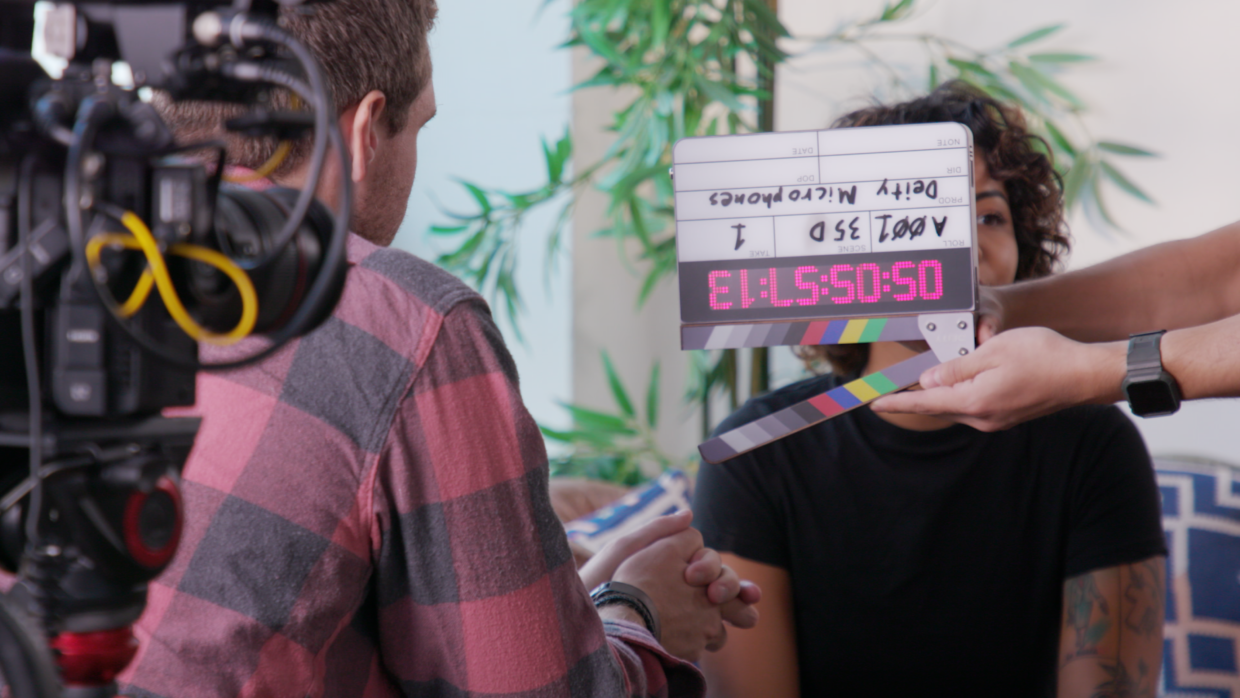
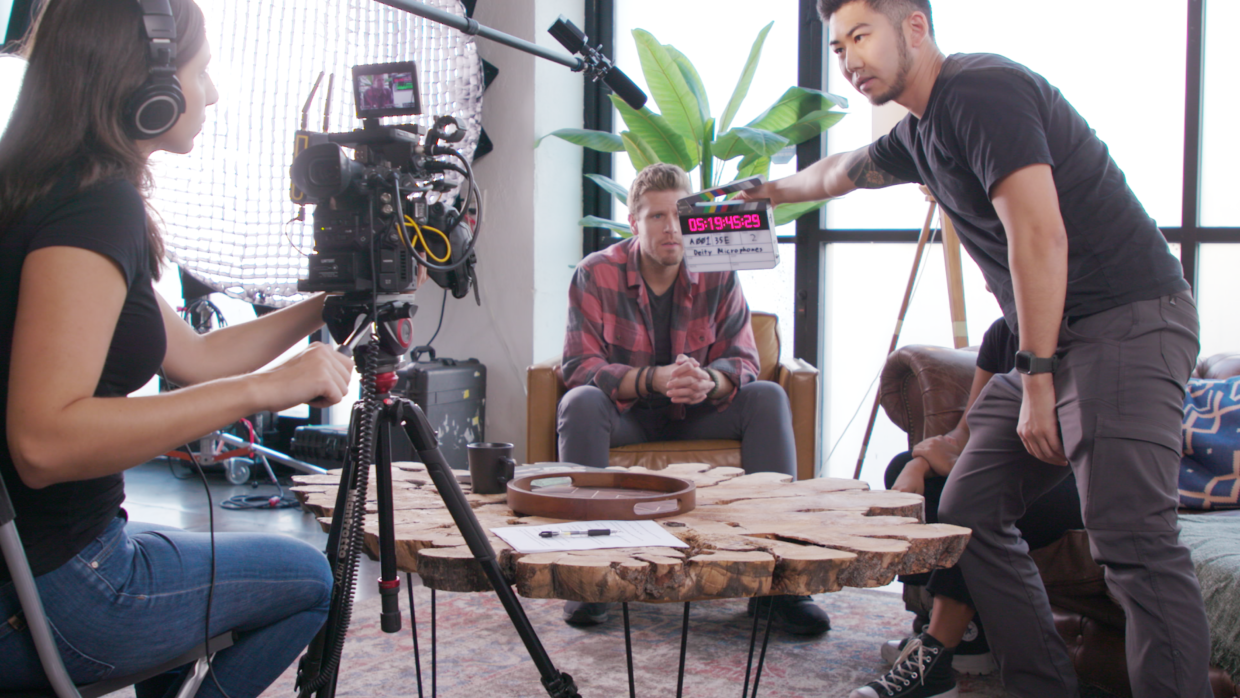
“Second Sticks”
We’re human though and sometimes we mess up. If you need to slate a second time, call out “second sticks” that way your editor knows about it and doesn’t pick the wrong sync point.
“Soft Sticks”
If the shot forces you to be up close with an actor, do not slate at full volume. This thing is built to be loud and actors’ ears are delicate.
Call out “soft sticks” and gently slate.
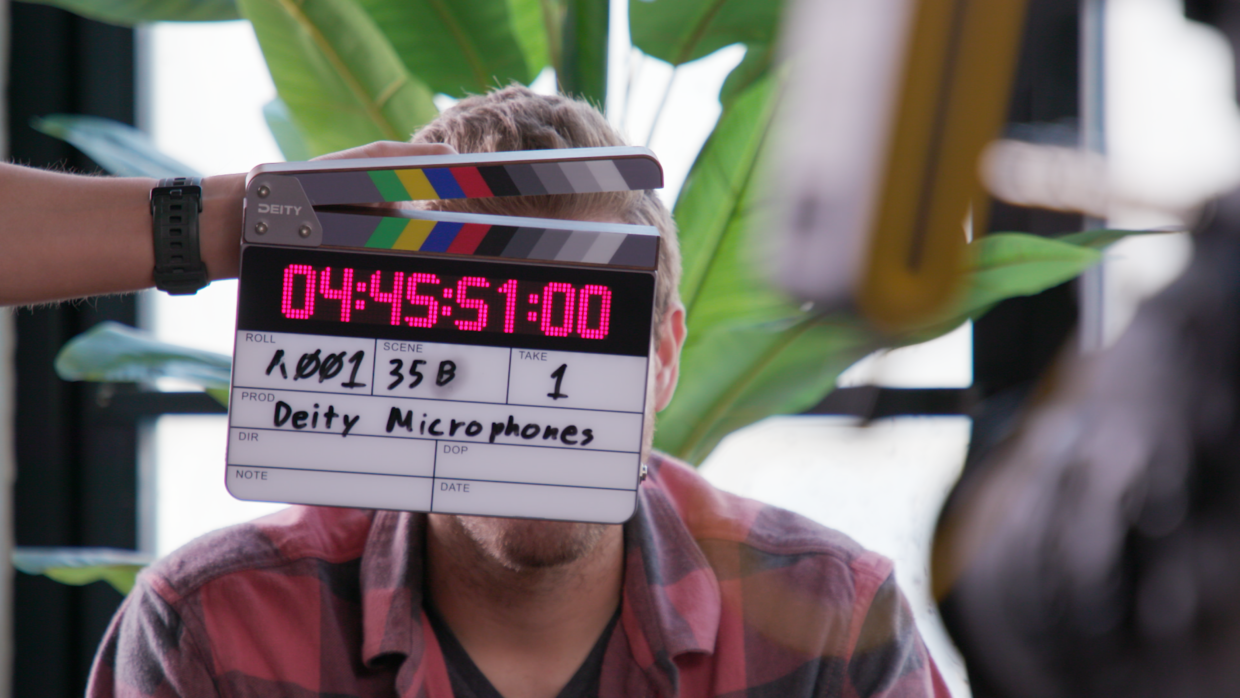
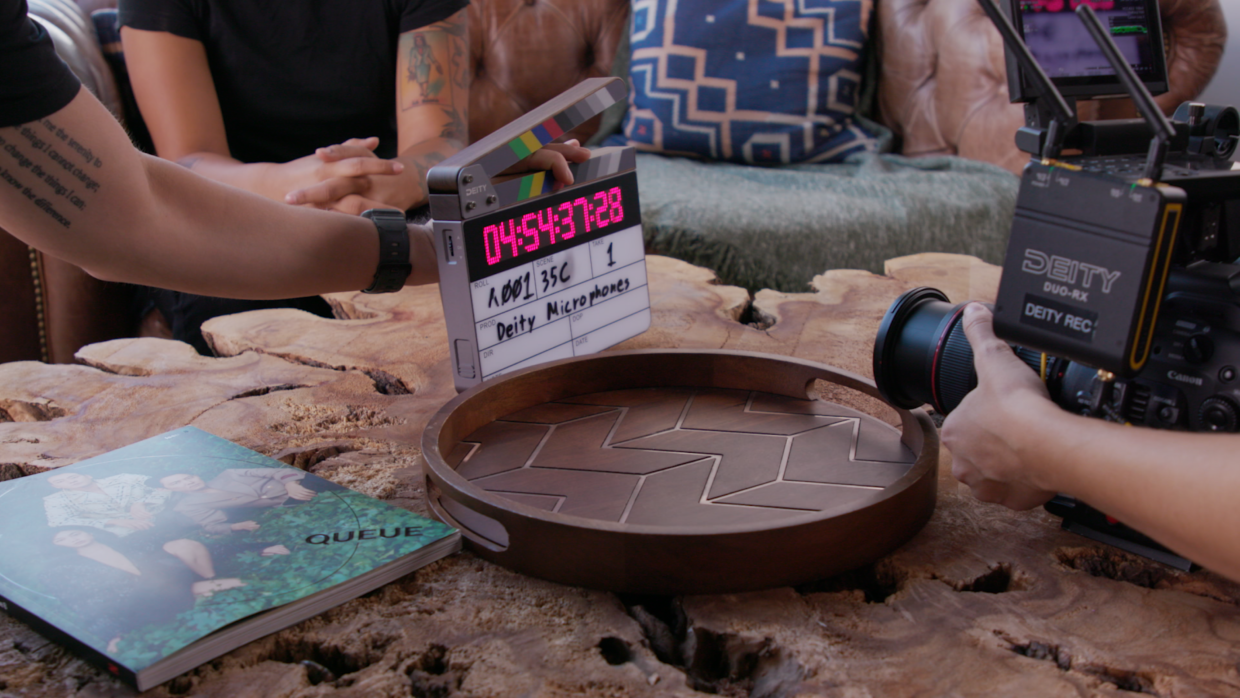
“MOS”
If you aren’t running sound at all, place your fingers between the sticks and hold it in the camera frame.
This is called “MOS” and the gesture will communicate that there is no sound file for this clip.
The film slate
In the beginning, we said a slate is how you sync cameras and audio recorders but now I hope you can see it is much more than that.
It is an organizational tool that gives your team the strong foundation it needs to enter post-production with confidence & professionalism.
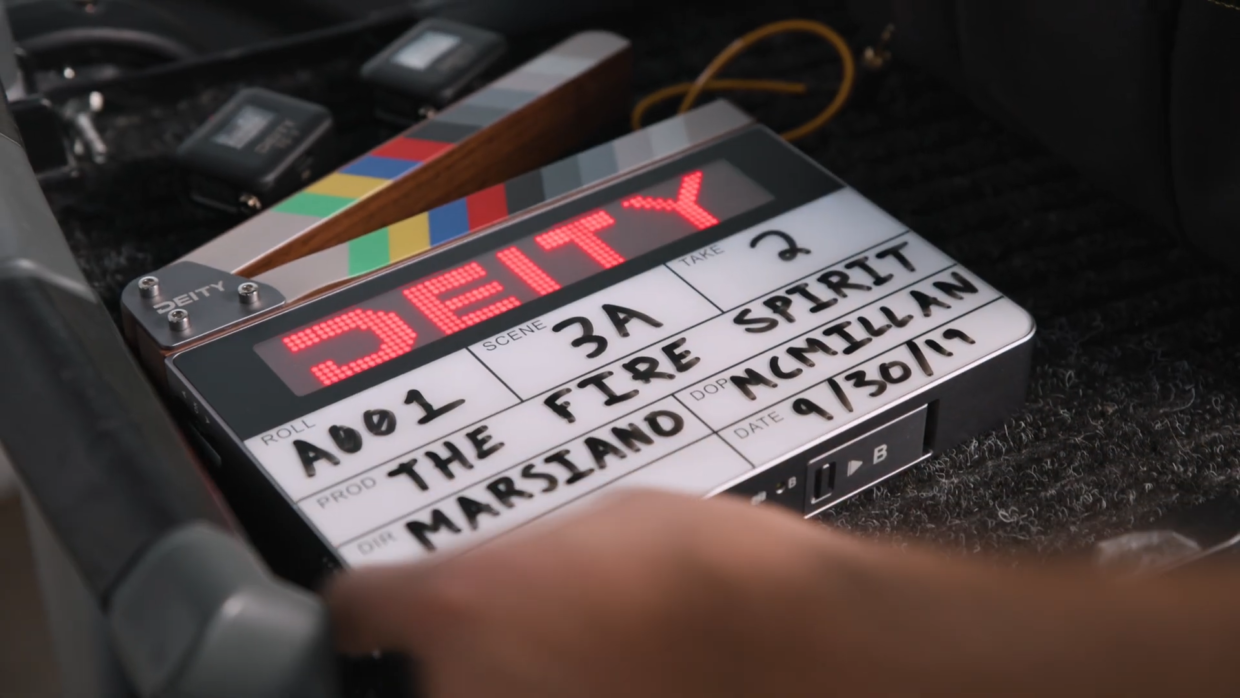
Drop a comment down below if you film slate questions!